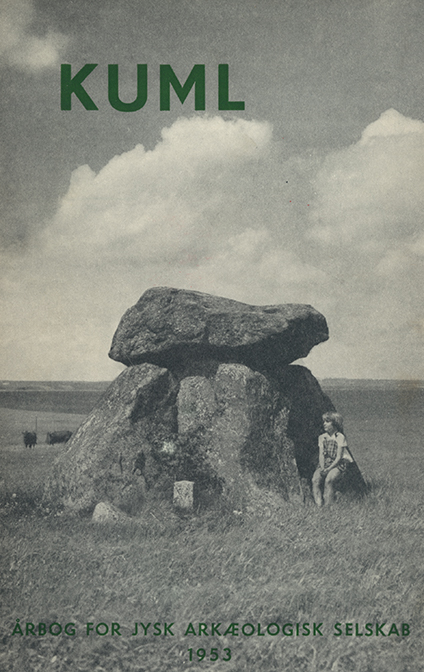Et løveglas fra Rhinlandet
DOI:
https://doi.org/10.7146/kuml.v3i3.97119Nøgleord:
løveglas, lion-glass, Roman tradeResumé
A Lion-Glass from the Rhineland
On the farm of Højvang near Skodborg, on a field in which the discovery of Celtic Iron Age pottery testified to prehistoric settlement in the vicinity, lay a low mound, about 15 X 20 metres in size and only 25 ems. high.
This was investigated by Haderslev County Museum, and revealed two graves of rather complicated construction. Beneath the topsoil the sandy gray earth, containing numerous stones and a few Iron Age potsherds, was broken in two places by large irregular layers of clay marking the graves. The clay had sunk above the actual grave shaft as a result of later subsidence.
Grave 1 (fig. 3). Beneath the clay layer a large shaft was found, 3.75 x 1.9 metres in size, full of clay, soil and stones. The shaft went a metre down, narrowing to 2.9 X 1.0 metres. At this level a little piece of paving was found at the east end of the shaft, and in front of this lay the actual grave, a further excavation measuring 210 by 60-70 ems., going down to a total depth below the surface of 165 cms. It was lined by vertical planks, pointed and driven into the ground. The bottom of the grave was 45 cms. lower in the middle than at the sides and was covered with a layer of planks. Upon these planks lay 4 broken pottery vessels and the sherds of a glass beaker. It appears likely that the bottom of the grave was originally horizontal with an empty space beneath it, and that the grave later subsided.
Grave 2 (fig. 4) resembled grave 1 in many ways. A shaft measuring 2.8 X 1.6 metres led down to a grave with a small paving besides it (fig. 5). A millimetre-thin brown earth layer coating the sides of this shaft suggests some sort of lining, perhaps of wood or of cloth. The grave itself, unlike grave 1, contained an oak-trunk coffin, with no lid but with its sides continued upwards by means of two horizontal planks laid on edge. The body lay on its side with flexed legs. A little silver fibula lay at the throat, a knife and an iron ring by the upper arm. Three pottery vessels lay at the foot of the coffin.
The pottery vessels from both graves are of types found in the 3rd and 4th Centuries A. D. and the fibula belongs to the 4th Century, probably to its first half.
The glass beaker (fig. 1) is of greenish glass with a small hase. Two lions' heads (fig. 6), 3.7 cms. wide and surrounded by a raised ring, have been fastened by pressing them on the soft glass. The height of the beaker is 9.5 cms., its width 9.5 cms. and 10 cms. across the rim. There can be no doubt that it was produced in the Rhineland and certainly in the city of Cologne, where the glassworks commenced activity in the first century A. D., and exported their products, after 200 A. D., to almost the whole of Europe. Lion-heads on Cologne glass are rare and no exact parallel to this beaker is known. Medusa masks, however, are known from the 3rd and 4th Centuries A. D. and it would seem reasonable to date this specimen to the end of the 3rd or to the 4th Century.
This discovery, together with others along Kongeaa, suggests that the Roman traders who followed the seacoast from the mouth of the Rhine used the valley of this river as a short cut across Jutland to Funen and the Baltic.
Hans Neumann
Downloads
Publiceret
Citation/Eksport
Nummer
Sektion
Licens
Fra og med årgang 2022 er artikler udgivet i Kuml med en licens fra Creative Commons (CC BY-NC-SA 4.0).
Alle tidligere årgange af tidsskriftet er ikke udgivet med en licens fra Creative Commons.


